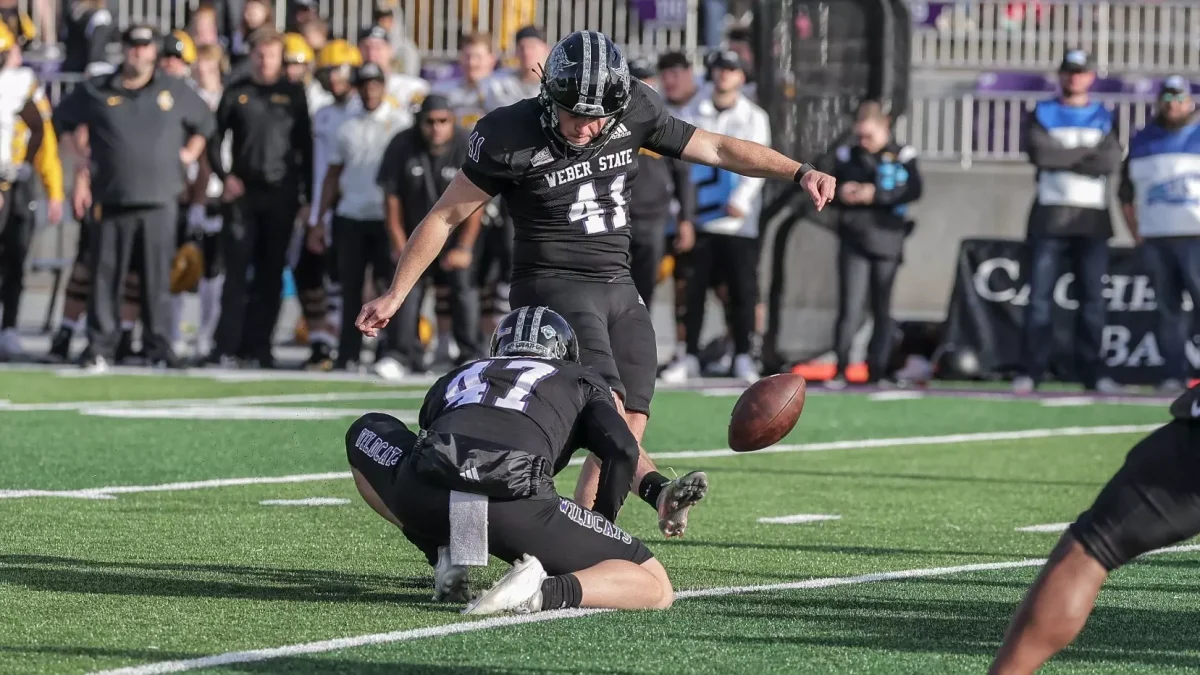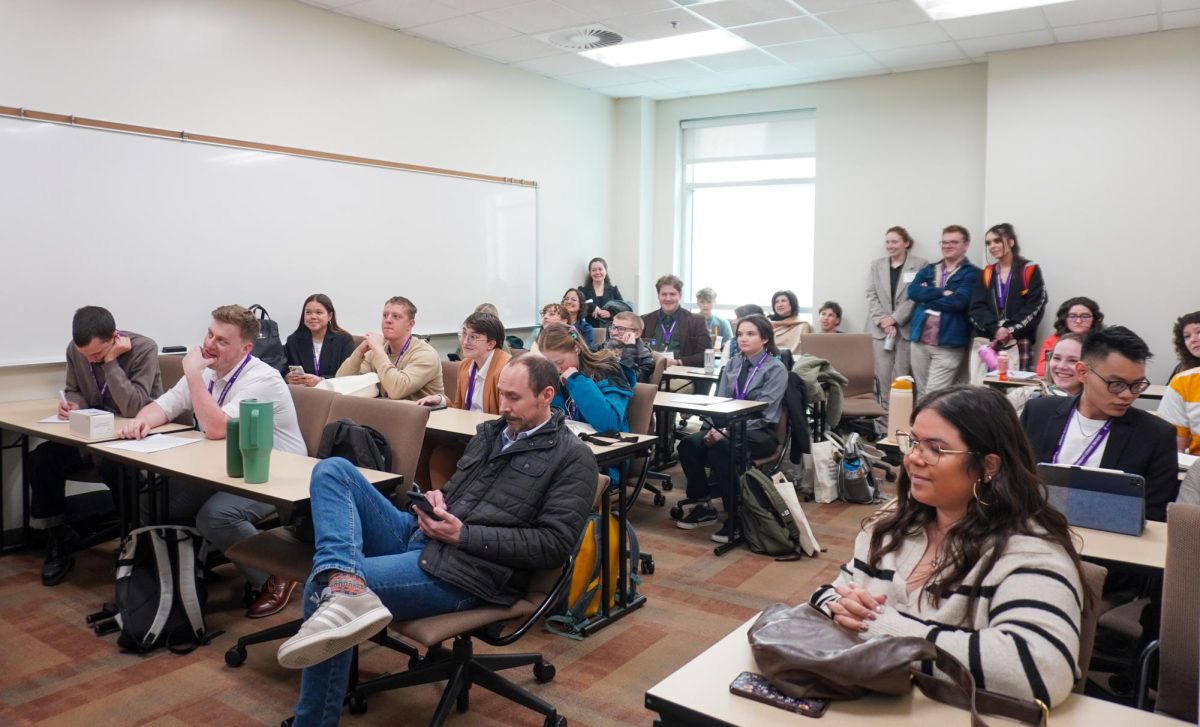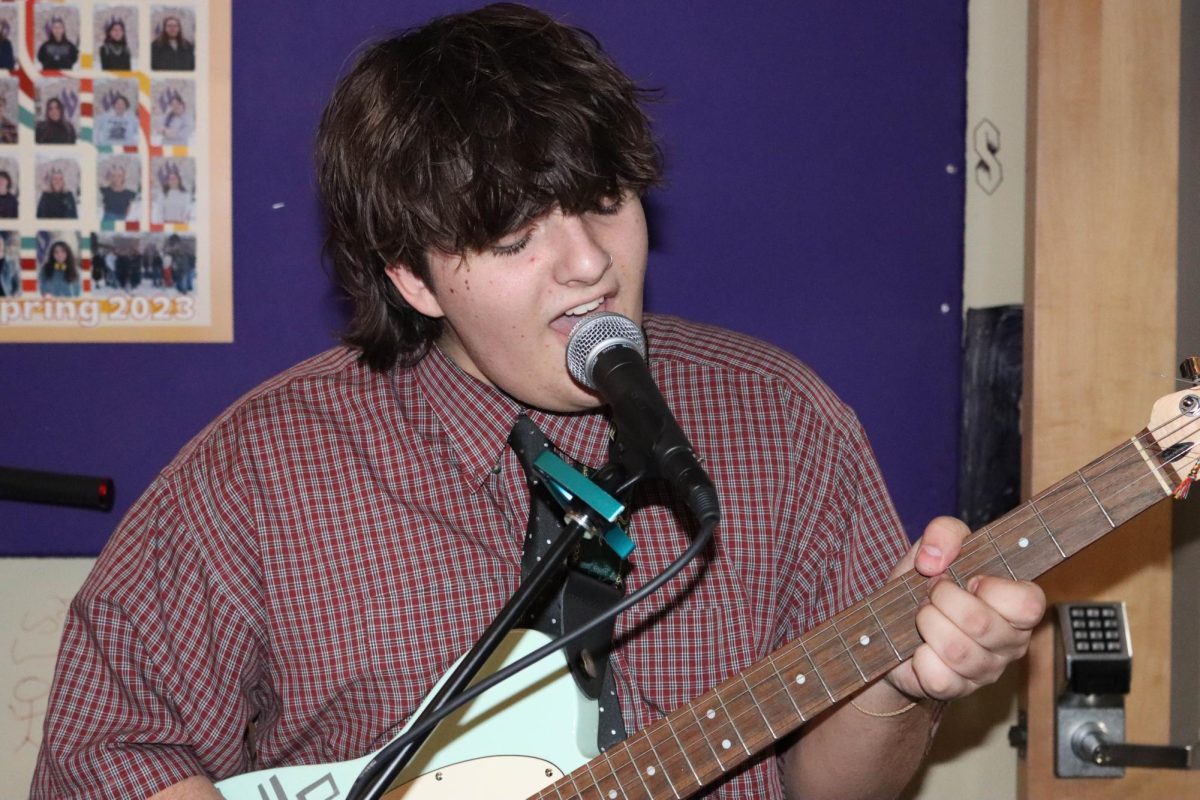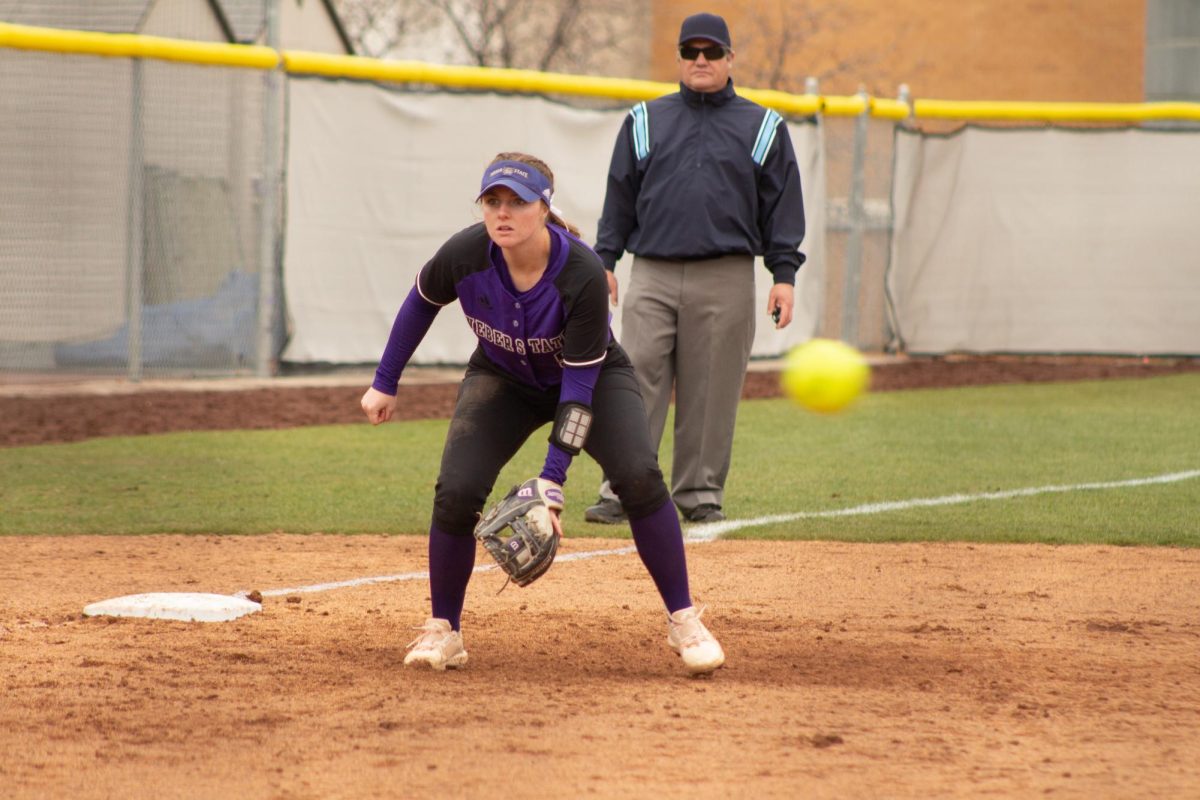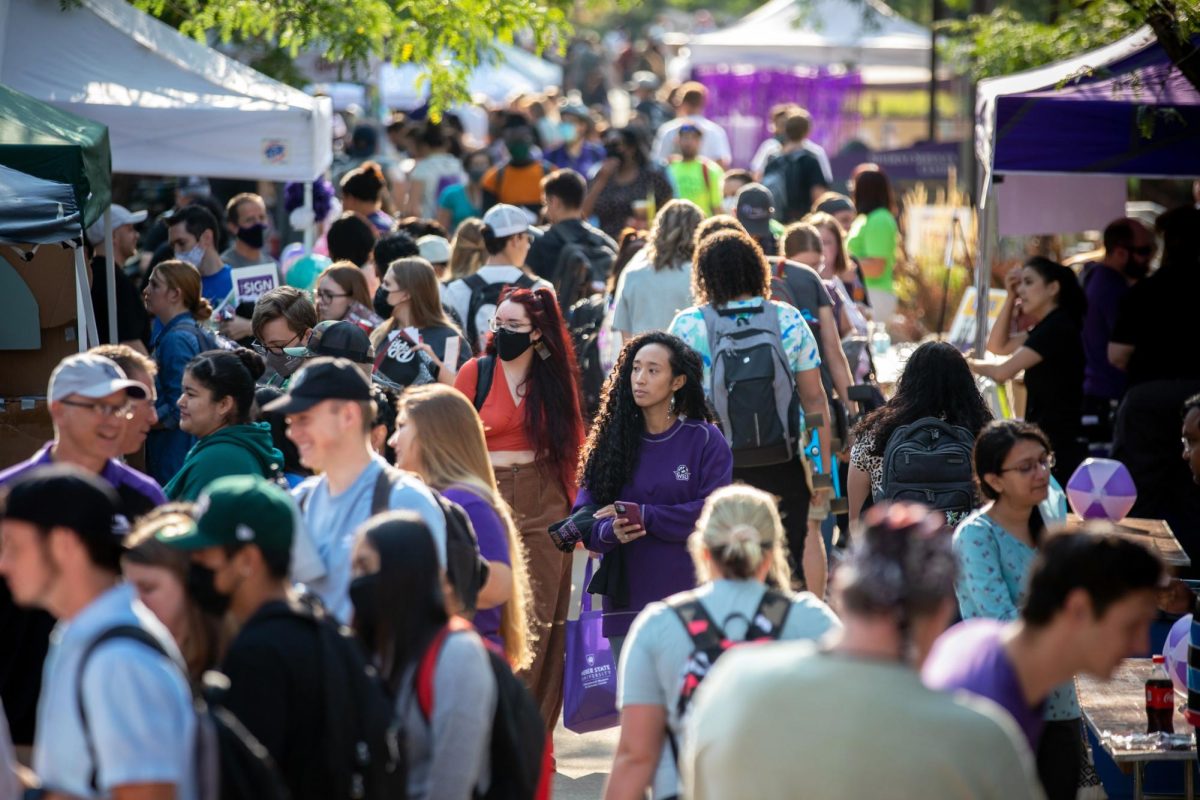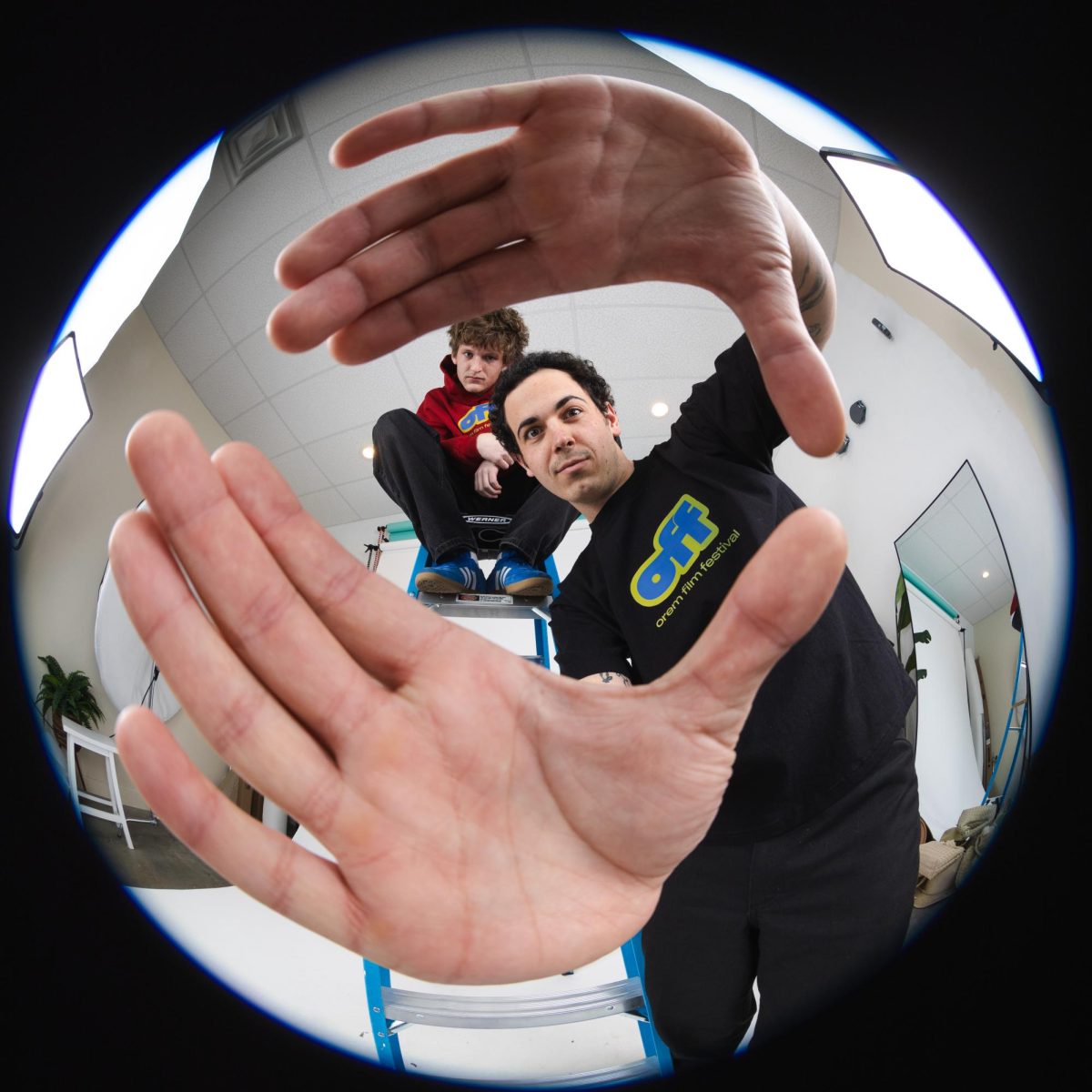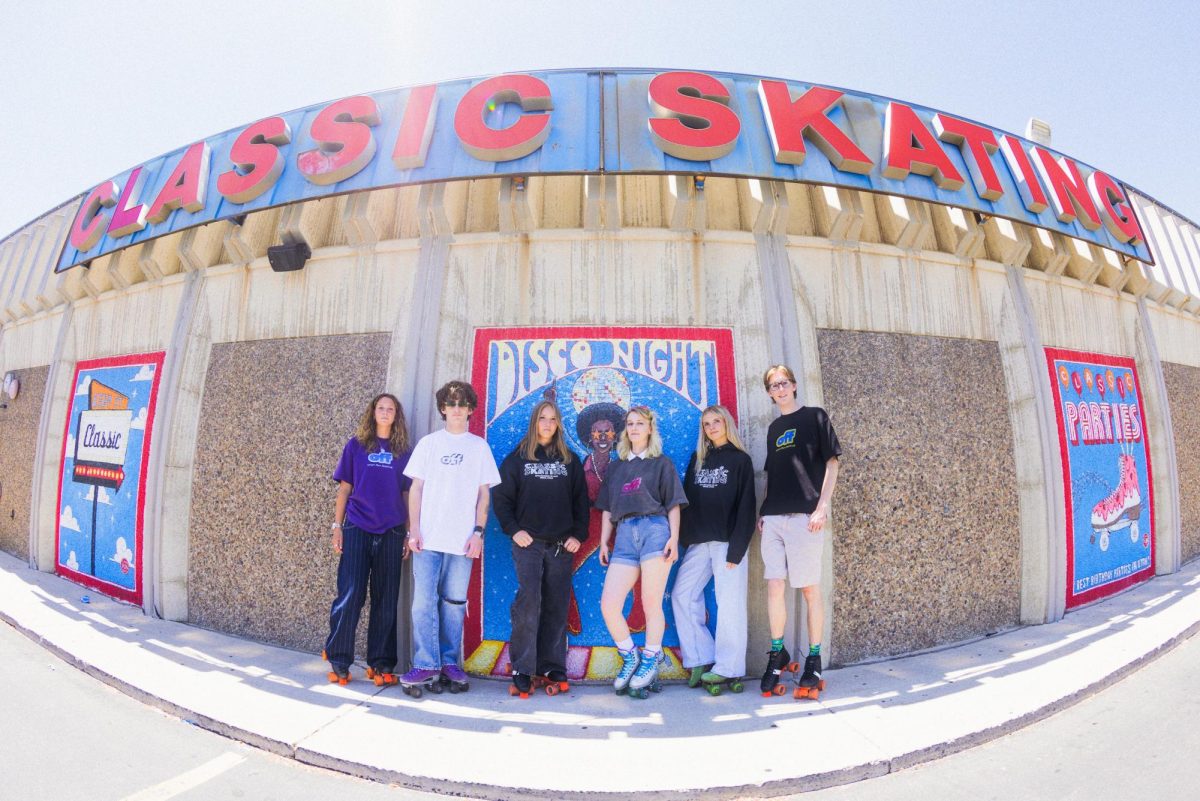Celebrations in Ogden for Día de los Muertos, or Day of the Dead, finished with a final, lively night at The Monarch on Nov. 5, including dances from the Weber State University Ballet Folklórico.

The Ballet Folklórico, which performs many different dances from all around Central and South America for different events, was invited to perform first at The Monarch’s musical celebration.
Guadalupe Garcia, leader of the Ballet Folklórico, said for the event, they chose traditional Mexican dances and dresses from various regions in Mexico, such as Jalisco and La Bamba. The dancers also painted their faces in traditional Catrina skull style for the Día de los Muertos celebration.
The performances were lively with many bright colors and flying skirts.
The Ballet Folklórico was also joined by dancer Kierstin Soriano, who portrayed La Llorona in one of the dances.
The legend of La Llorona tells of a woman who, upon finding her husband cheating on her, drowns her own children and then drowns herself out of guilt. Her spirit now wanders, searching for her children. While the tale is not specific to just Día de los Muertos, it is often brought up around the celebration.

Two more groups performed at The Monarch after the Ballet Folklórico: a youth mariachi group from Esperanza Elementary, called Mariachi Aguilas de la Esperanza, and a Chicano band from California, called Las Cafeteras.
Stefanie Vazquez, Hispanic student senator and member of the Ballet Folklórico, explained that Día de los Muertos is a celebration of the lives of those who have passed on, allowing those still living to remember and honor them.
She explained that, while the celebration can be found all around Central and South America, it looks different in various regions. The Day of the Dead most well known in the United States is that of the Mexican culture, with colors everywhere.
Vazquez said the celebration includes setting up ofrendas, or altars, with pictures of friends and family who have passed on. Like seen in the movie “Coco,” Vazquez said they do this because they believe the spirits of their loved ones come back to these altars.
The altars also include foods, alcohol and other drinks as well as the bright orange “cempasúchil” flowers, known in English as marigolds. Vazquez said there are big fields of these flowers in Mexico that are in full bloom around this time of year, and they are used on the altars so that the strong scent will guide the spirits.

Many members of the dance team expressed their appreciation for the beautiful way to understand and think of death and grieving that this celebration stands for.
“I can say that I have learned from the Mexican community to understand death in a different way,” Monica Rodriguez, WSU Ballet Folklórico adviser, said. “For them, it’s more the reunion or the opportunity they have every year around Nov. 1 and Nov. 2 to be reunited with those who left early and honor them with an altar or a table full of food and symbolism around.”
Jennifer Duenaz, another member of the group, and Garcia explained that the celebration is neither happy nor sad; rather, it’s celebrated with love, the comfort of a future reunion and wishing their loved ones well in the afterlife.
The importance of having these Hispanic celebrations in the community for all to see and experience was also highlighted by many in the Ballet Folklórico. These celebrations are both to welcome and share Latino culture with those who don’t know about it as well as to reach out to members of the same culture and get them more involved in the community.

“We want to bring all cultures together, and we want to share this part of the Hispanic culture with others,” Ashley Andersen, member of the Ballet Folklórico, said.
Graciela Duenaz, another dancer, also said it was important to the Hispanic community to be able to pass down these traditions to the younger generations.
Rodriguez said that this year marks 13 years since the WSU Ballet Folklórico was founded by a past Hispanic senator. Rodriguez explained that the woman founded the dance group around the time of Día de los Muertos in honor of the daughter she had lost, and since then the dance group and the holiday have grown and expanded more into the community.




